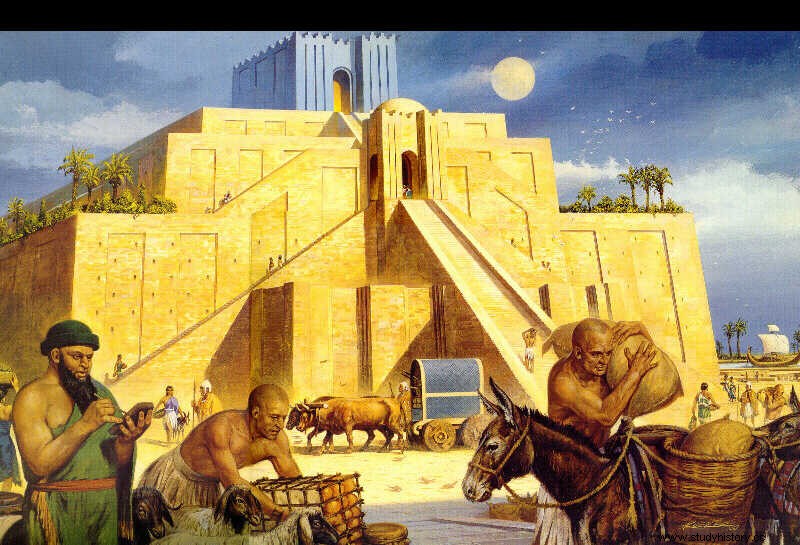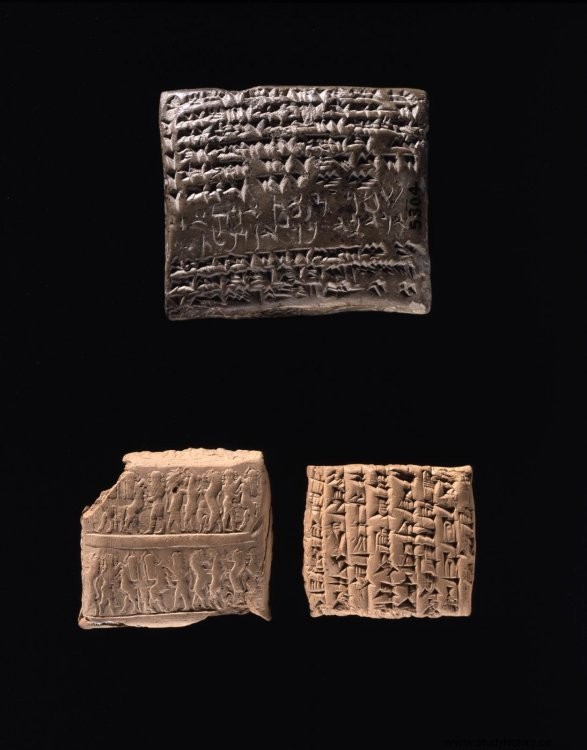It is possible that one of the oldest professions of humanity is that of a banker. Curiously, we have no news that it was practiced in hunting societies, possibly due to the ease with which a mortgage could be repaid by means of 15 cm of sharpened flint. But when they appeared, in cultures with agricultural or livestock surpluses, bureaucrats, taxes and banking-type activities made their appearance. When steaks are left over, it's not just cholesterol that goes up.
One place where these types of activities left a deep mark was in Sumeria. In a society like that of the black heads, where taxes were collected almost even for breathing, it was to be expected that sooner rather than later someone would have debts with a neighbor or, poor him, with the State. Hence the figure of the vampire appeared... sorry, the moneylender. The situation, as is logical, must have created all kinds of abuses, since already in the 24th century B.C. we discover the figure of the king Urukagina of Lagash , which defeated the previous ruler and initiated a series of social reforms. Among them, the exemption from taxes for widows and orphans, the obligation for the rich to pay the poor with money, since surely the very cheeky gave payments in kind in poor condition, or the forgiveness of abusive debts. For the rich of that time, debts were a fantastic system to keep everything, because either they forced the poor devil on duty to sell his land at a ridiculous price or they forced him to work as a slave for a season to fulfill the debt on duty.

The abundance of payment commitments was such that the temples themselves decided that passing the brush was too simple and they entered this system of loans with interest, even making slaves. That yes, to interests that were not abusive. If someone was too desperate, since even the priests could smell a bad deal from a distance and refuse to give the requested money, they could turn to a professional moneylender. Of course, the interest could be very indigestible. On a Sumerian tablet we find the text:
Adakala has received on loan from Urdulazaga 120 shekels of silver, at interest of 5 shekels for every 60. He will repay the sum in the month of Sig. He has sworn in the name of the king. [120 shekels of silver was roughly equivalent to about 960 grams]
In another tablet we discover that someone, perhaps in a hurry, has bought all the tickets to receive the visit of two strong individuals, who will rearrange the bones of his legs in an unpleasant way:
Irrara, son of Ziyatum, has received on loan from Uselli 60 shekels of silver, at the interest of 15 shekels for the 60. He will repay the sum the next moon. The contract has been sworn before the witnesses Kalki and Adada and before the gods.
The temples were in a privileged position, as they stored surpluses, both agricultural and livestock products. That allowed them –of course! – Receive all kinds of perquisites from the kings, because when making a war the monarch depended on the loan of those surpluses to feed, arm and dress his troops. But over time the temples also began to speculate on these surpluses and to trade them. And since the benefits could be high, this activity was practiced by members of the clergy and royalty in a private capacity, as well as wealthy people, including some women who became rich. And it is at that moment when what we could consider as “professional banking appears. ” or the “banking dynasties ”. In other words, families that dedicated their activity for several generations not only to lend money with a lot of interest, but also to mediate in commercial businesses, guard the wealth of third parties and even speculate and trade with the assets of their clients at a profit.
In 1893, the University of Pennsylvania was carrying out its third excavation expedition in Mesopotamia, specifically in the city of Nippur , when almost 900 clay tablets written in cuneiform and in Aramaic and Akkadian languages were found in the remains of a room. After being translated, it was found that they constituted the oldest proof of the existence of a banking dynasty, since they contained the accounting and bureaucracy of the Babylonian family Murashu for three generations. The activity of this family begins before the fall of Babylon and continues after its conquest by the Persian Cyrus the Great . In other words, as usually happens with this type of lineage, they knew how to swim and keep their clothes, whoever was in charge. They guarded precious objects of their clients in what we now know as "safe deposit boxes", for an annual payment. They made loans and were allowed to collect taxes on behalf of the king, a task they continued to do after the fall of the last ruler of Babylon, Nabonidus , indicating that Cyrus himself owed them favors and/or money. The latter even granted them the privilege of financing the return of the Jews who wished to return to his land when he finished his exodus in Babylon. With some of those who decided to stay, specifically about a hundred families in the Nippur area They did business. Thus, for example, one of the tablets indicates that they helped a Jewish trader named Udarna to recover his assets, stolen by a brother, managing not only to recover them, but also the written agreement that they will not sue again in the future, even after several generations have passed.

In the almost 900 tablets, the names of some 2,500 clients have been located, among whom are famous noblemen of the time, such as Menostanes , grandson of Xerxes I, or his father Artario , satrap of Babylon. The family came to employ 60 commercial agents and leased land from royal officials, paying the corresponding taxes and keeping a percentage for the service. They were also doing negotiations in Elam although its nature is unclear. Since we have no news that they were dedicated to changing currency, it is possible that it was just a visit to place a commercial agent in Susa .
As we see, the idea of a family handling banking, trade, lending and speculation, and negotiating with kings and ministers, is not as modern an idea as some believe. All this was already practiced 26 centuries ago. That yes, in a somewhat primitive way, well, everything must be said, in no tablet have we found that they offered a tablet, a giant screen television, a trip to the beaches of Cuba or a laptop, in exchange for a deposit . They still had something to learn.
